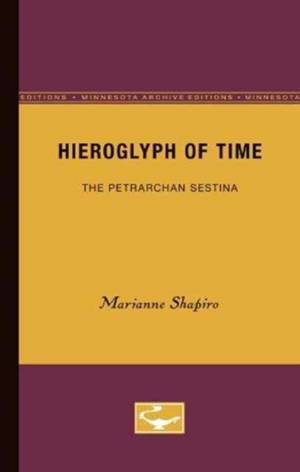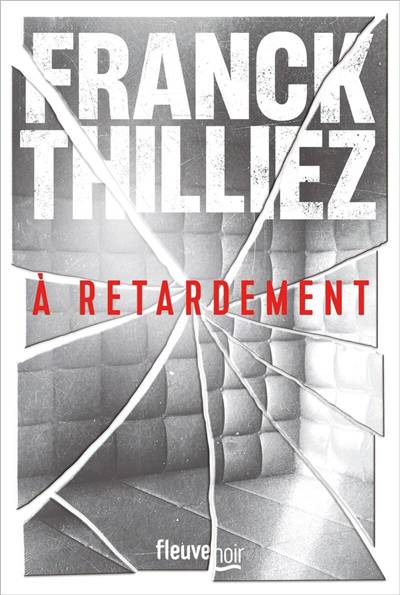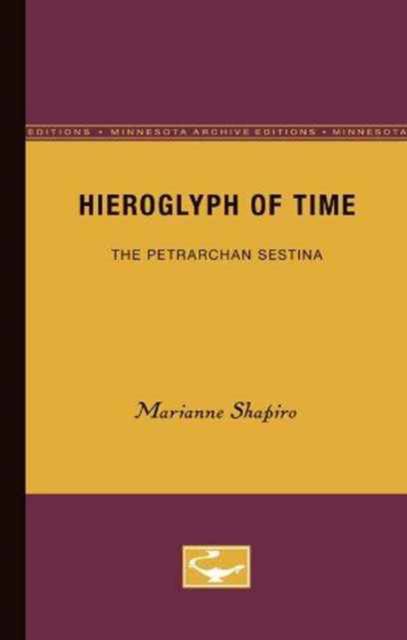
- Retrait gratuit dans votre magasin Club
- 7.000.000 titres dans notre catalogue
- Payer en toute sécurité
- Toujours un magasin près de chez vous
- Retrait gratuit dans votre magasin Club
- 7.000.0000 titres dans notre catalogue
- Payer en toute sécurité
- Toujours un magasin près de chez vous
62,95 €
+ 125 points
Description
Hieroglyph of Time was first published in 1981."A dance of the intellect among words," Ezra Pound called the sestina. A poetic form invented by a Provençal troubadour, Arnaut Daniel, the sestina was elaborated and refined by Petrarch and is used today exactly as it was created. In Hieroglyph of Time, the first critical study of the sestina, Marianne Shapiro analyzes poems by Daniel, Petrarch, Pontus de Tyard, Sannazaro, Sidney, Spenser, Auden, Pound, Merwin, and Ashbery and discusses sestinas composed in German and Portuguese. In so doing, she traces a strand that links modern to Medieval poetry. Shapiro's methodology demonstrates, furthermore, that it is possible to reconcile the language of structuralism with a historical approach to literary scholarship.Hieroglyph of Time begins with a general introduction to theories of temporality and a chronological discussion of the sestina tradition. The repetition of end words in the sestina makes the form a reflection on time, and the sestina itself, Shapiro argues, is a poignant and searching exploration of temporality. The heart of the book is devoted to an explication of five of Petrarch's sestinas. Shapiro pursues Renaissance imitations of the Petrarchan sestina in the work of Pontus de Tyard, a member of the Pléiade who adapted the sestina in a neoplatonic mode, and of Spenser and Sidney, who made the sestina a pastoral poem. After examining twentieth-century uses of the pastoral, she recapitulates her survey, returning to Italian literature to see how the ship allegory is used by three poets in the Medieval, Renaissance, and modern periods -- Petrarch, Michelangelo, and Ungaretti.
Spécifications
Parties prenantes
- Auteur(s) :
- Editeur:
Contenu
- Nombre de pages :
- 272
- Langue:
- Anglais
Caractéristiques
- EAN:
- 9780816669356
- Date de parution :
- 13-02-81
- Format:
- Livre broché
- Format numérique:
- Trade paperback (VS)
- Dimensions :
- 149 mm x 229 mm

Les avis
Nous publions uniquement les avis qui respectent les conditions requises. Consultez nos conditions pour les avis.






